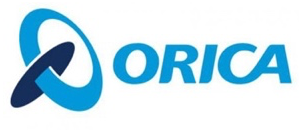Machinery Pre-Start Checklist
The Essential Tool for Ensuring Safe Equipment Operation
Our free Machinery Pre-Start Checklist helps safety managers and operators ensure that machinery is safe to use before each operation, reducing the risk of accidents and equipment damage.
This Machinery Pre-Start Checklist is developed based on:
- Industry best practices
- Input from experienced machinery operators and safety professionals
- Alignment with current safety regulations and standards

What is a Machinery Pre-Start Checklist?
A Machinery Pre-Start Checklist is a systematic tool used to inspect and verify the safe condition of machinery before operation. It guides operators through a series of checks to identify any potential issues or hazards that could compromise safety or machine performance.
When to Use a Machinery Pre-Start Checklist
This checklist should be used:
- Before starting any machinery at the beginning of a shift
- After extended periods of machine inactivity
- Following maintenance or repair work
- When there's a change in operators
- As part of regular safety protocols, even for frequently used equipment
How to use the Machinery Pre-Start Checklist
- Download and familiarize yourself with the checklist.
- Conduct a visual inspection of the machinery and its surroundings.
- Check all safety guards and emergency stop mechanisms.
- Verify fluid levels and look for any leaks.
- Ensure all controls are in neutral and function correctly.
- Check for any unusual noises, vibrations, or odors during a brief test run.
- Record any issues found and report them to the appropriate personnel.
- Only proceed with operation if all checks are satisfactory.
Key Components of the Machinery Pre-Start Checklist
- General Area Safety
- Machine-Specific Safety Features
- Operational Controls
- Fluid Levels and Potential Leaks
- Electrical Systems
- Mechanical Components
- Warning Systems and Indicators
- Personal Protective Equipment (PPE) Requirements
Benefits of Regular Site Safety Inspections
- Reduces the risk of accidents and injuries
- Prevents costly equipment damage and downtime
- Ensures compliance with safety regulations and manufacturer guidelines
- Promotes a culture of safety and responsibility among operators
- Provides documentation for safety audits and machinery maintenance records
FAQs
The checklist should be completed by the machine operator. However, all personnel who use the equipment should be trained in proper pre-start inspection procedures.
The time can vary depending on the complexity of the machinery, but a thorough check typically takes 5-15 minutes. This small time investment can prevent hours or days of downtime due to accidents or equipment failure.
While our free template covers common pre-start checks, you may need to adapt it for specific types of machinery in your workplace. For customizable digital checklists, consider our complete safety management system.
If any problems are found, the machine should not be operated. Report the issue immediately to your supervisor or maintenance team. Only resume operation after the problem has been addressed and the machine has been cleared for use.
Enhance Your Safety Management with SafetyIQ
Why use SafetyIQ?
Our Machinery Pre-Start Checklist is just one component of our broader safety ecosystem.
How we support your safety initiatives:
- User-friendly digital tools for easy implementation
- Regular updates to align with changing safety standards
- Expert support to help you maximize the effectiveness of your safety program
How do we do this?
Customizable forms are assigned to team members with context notes, dates, and reminders to make sure nothing gets missed. The assessment can be taken from any device (e.g. mobile phone, tablet) and once completed, you can assign corrective actions where necessary.
Remediation orders are assigned, given a due date, and forwarded to the right person. The progress can be tracked and the completion can be confirmed. Any action not performed in time will automatically generate an alert for follow-up.
Captured data feeds directly into reporting dashboards, allowing you to understand trends and problem hotspots. With this visualised data, users can know where to focus their efforts to make continuous safety improvements.
Benefits of digital solutions:
- Efficiency and Time Savings: Digital solutions streamline safety processes by eliminating the need for manual paperwork, data entry, and storage. With a digital platform, everyone can quickly and easily capture and record audit data, generate reports, and share information across teams. This saves time, reduces administrative burdens, and allows more efficient auditing processes.
- Accuracy and Data Integrity: Paper-based forms are susceptible to errors, such as illegible handwriting or misplaced documents. Digital solutions provide standardized forms and automated data entry, minimizing the risk of human errors.
- Centralised Data Storage and Accessibility: Storing data digitally eliminates the need for physical storage space and the risk of document loss or damage. Digital platforms provide centralized storage, making it easy to access and retrieve audit records whenever needed. This accessibility enables historical trend analysis, benchmarking, and the ability to track and monitor corrective actions over time.
- Advanced Reporting and Analytics: Digital solutions offer powerful reporting and analytics capabilities. Data can be analyzed to identify trends, patterns, and areas of non-compliance more effectively. customisable dashboards and visualizations provide a comprehensive overview of audit findings, allowing for data-driven insights and strategic decision-making.
- Integration with Other Systems: Digital solutions can be integrated with other business systems, such as compliance management software, document management systems, or incident reporting tools. This integration streamlines data exchange and enhances the overall HSE management process, promoting a holistic approach to risk mitigation and compliance.
- Sustainability and Environmental Benefits: Shifting to digital forms reduces paper consumption, printing, and transportation associated with traditional audits. This contributes to environmental sustainability efforts, reducing the organisation's carbon footprint and promoting a greener approach to HSE management.
Real Results Experienced by Our Customers:
Along with productivity improvements, companies have seen insurance premiums and workers' compensation costs reduced.
Palfinger saw their Workers Comp direct cost alone reduced by almost one million dollars over 2 years due to their robust safety management system.













